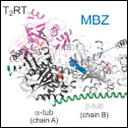
A team from the Margarita Salas Biological Research Center (CIB Margarita Salas-CSIC) has verified the efficacy of drugs, already used clinically, in virus infections such as SARS-CoV2, among others. The results demonstrate how these drugs, called MTAs, inhibit viral infection. They target microtubules, structures inside cells used by viruses for replication. The team used the ALBA Synchrotron to see how these drugs bind to the protein that forms the microtubules, obtaining a three-dimensional image of this drug-protein union. By adhering to it, the drug blocks the protein, preventing the formation of the microtubule and, therefore, the replication of the virus.
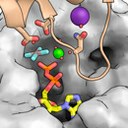
A study led by the Margarita Salas Center for Biological Research (CSIC) reveals the mechanism by which FtsZ filaments assemble and disassemble to allow cell division of Staphylococcus aureus, one of the deadliest antibiotic-resistant bacteria. Part of the experiment was done at the XALOC beamline of the ALBA Synchrotron.
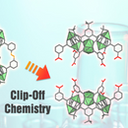
A study led by ICREA researchers and ALBA users Daniel Maspoch and Inhar Imaz has found out a novel approach to synthesise molecular structures that can allow material scientists to design and build a set of new materials. A crucial part of the experiment, the structural determination of the compounds, was performed at the XALOC beamline of the ALBA Synchrotron.
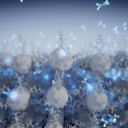
Researchers at IMDEA Nanociencia control the weakest van der Waals forces in a fullerene C60 compound by applying an external stimulus. The study represents a landmark achievement in the field of Supramolecular Chemistry, where weak forces can play a crucial role in chemical reactions. This strategy has allowed for the first time to selectively and in a controlled manner hydrogenate the C60 and may have relevant implications for hydrogen storage. Researchers used the XALOC beamline at ALBA to determine the crystal structure of the compound.
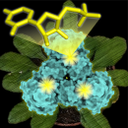
A research team from the Biomedicine Institute of Valencia (IBV-CSIC) and from the CIBER of Rare Diseases (CIBERER), in collaboration with the Universität Kaiserslautern in Germany, has studied the ATC protein, an essential enzyme for the biosynthesis of pyrimidines, the building blocks of the genetic material. The structural determination was carried out at the ESRF synchrotron and at the XALOC beamline of ALBA, devoted to macromolecular crystallography. The structural data, combined with other analysis, has allowed researchers to describe the functioning mechanism of the enzyme, opening the venue for new strategies to design herbicides and antitumoral compounds.




